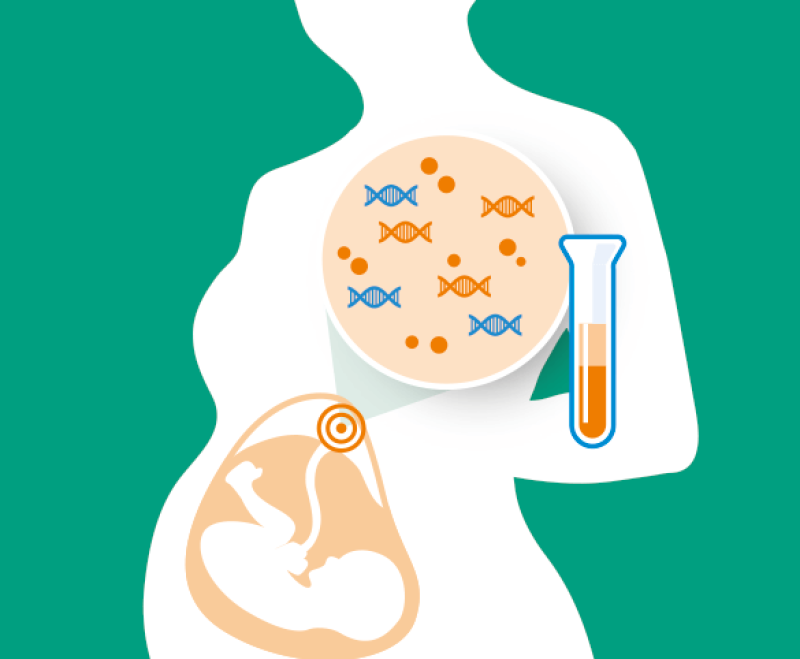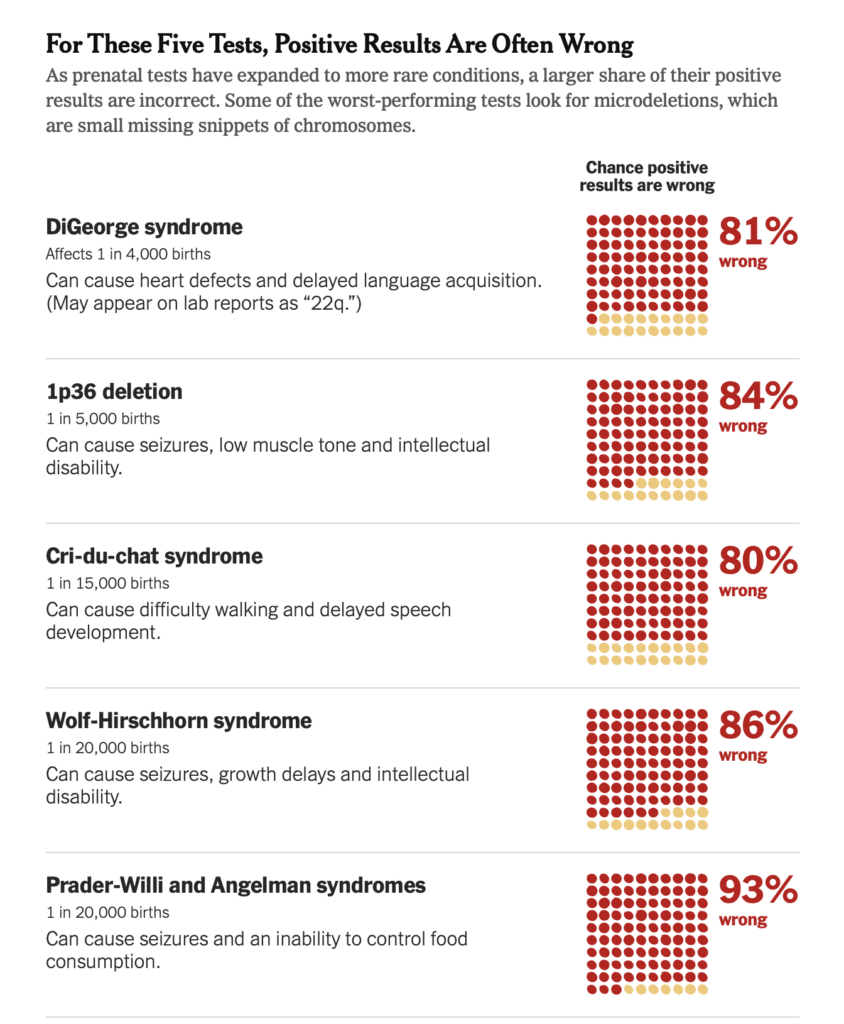Silicon Valley technology has made [a wondrous promise] to expectant mothers: that a few vials of their blood, drawn in the first trimester, can allow companies to detect serious developmental problems in the DNA of the fetus with remarkable accuracy.
In just over a decade, the tests have gone from laboratory experiments to an industry that serves more than a third of the pregnant women in America, luring major companies like Labcorp and Quest Diagnostics into the business, alongside many start-ups.
The tests initially looked for Down syndrome and worked very well. But as manufacturers tried to outsell each other, they began offering additional screenings for increasingly rare conditions.
The grave predictions made by those newer tests are usually wrong, an examination by The New York Times has found.
Patients who receive a positive result are supposed to pursue follow-up testing, which often requires a drawing of amniotic fluid or a sample of placental tissue. Those tests can cost thousands of dollars, come with a small risk of miscarriage and can’t be performed until later in pregnancy — in some states, past the point where abortions are legal.
The companies have known for years that the follow-up testing doesn’t always happen. A 2014 study found that 6 percent of patients who screened positive obtained an abortion without getting another test to confirm the result.
































